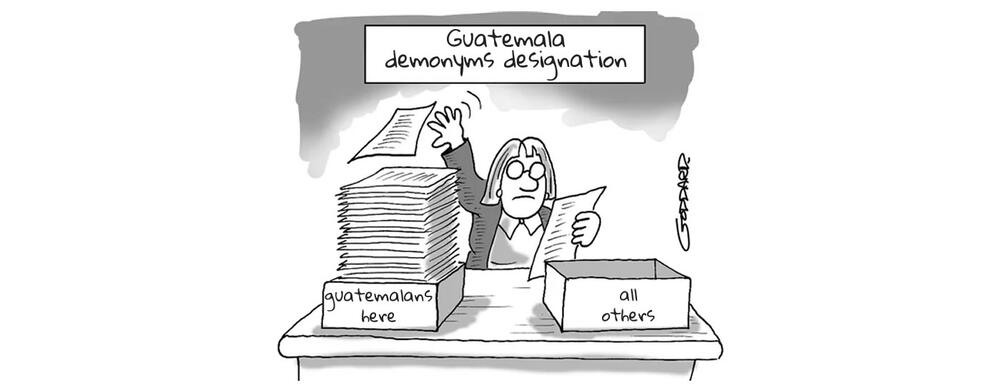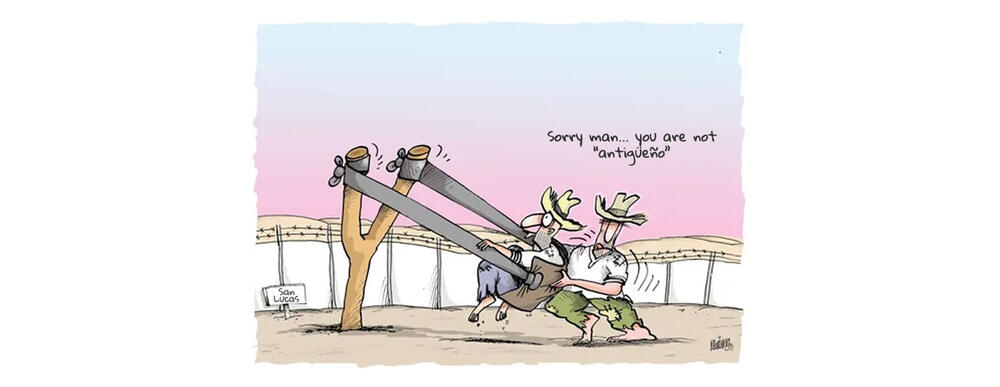Posted on Jun 03, 2023 |
In Guatemala, a demonym is used to distinguish its inhabitants and identify their regions of origin. The term "Guatemaltecos" refers to people who were born in Guatemala, have lived there for some time, or have familial roots in the country. However, there is also a specific demonym to recognize the natives of each department, contributing to their sense of identity within Guatemala and their respective regions.
Before delving into the department-specific demonyms, let's define what demonyms are in the Spanish language. Demonyms are adjectives that indicate the place of origin for people or things. As adjectives, they exhibit gender (masculine or feminine) and number (singular or plural) agreement. Demonym adjectives are written in lowercase and can also function as nouns when referring to individuals based on their place of origin. Here are some examples in both Spanish and English:
"Julio es un profesor guatemalteco que tiene muchos años de experiencia." (Julio is a Guatemalan teacher with many years of experience.)
"Maria es una antigüeña que prepara unos tamales deliciosos." (Maria is an Antiguan who prepares delicious tamales.)

Generally, demonyms are derived from the current name of a place, although in some cases, the old name may be used. The formation of demonyms from place names presents numerous instances, both regular and irregular. In Spanish, the most common regular cases involve adding a suffix to the noun. There is a wide variety of suffixes in Spanish that serve this purpose, such as -ano, -és, -ense, -eño, -ino, -ero, eco, and more (along with their feminine and plural variants).
Guatemala is divided into 22 departments and 341 departmental municipalities. While the primary language spoken is Spanish, Guatemala is also home to 22 Mayan languages, which greatly contribute to the country's multicultural and linguistic exchange.
Below, you'll find a list of demonyms for each department in Guatemala:
- - Alta Verapaz: altaverapacense
- - Baja Verapaz: vajaverapacense
- - Chimaltenango: chimalteco(a)
- - Chiquimula: chiquimulteco(a)
- - El Progreso: progresista or progresano
- - Escuintla: escuintleco(a)
- - Guatemala: guatemalteco(a)
- - Huehuetenango: huehueteco(a)
- - Izabal: izabelense
- - Japala: jalapaneco(a)
- - Jutiapa: jutiapaneco(a)
- - Petén: petenero(a)
- - Quetzaltenango: quetzalteco(a)
- - Quiché: quichelense
- - Retalhuleu: retalteco(a)
- - Sacatepéquez: sacatepequeño(a)
- - San Marcos: sanmarquense
- - Santa Rosa: santarrocense
- - Saloá: soloteco(a)
- - Suchitepéquez: suchiteco(a)
- - Totonicapán: totonicapense
- - Zacapa: zacapaneco(a)
These demonyms not only provide a sense of regional identity but also showcase the rich cultural and linguistic diversity present within Guatemala.
Latest Posts
-
Ten Beautiful Words in the Spanish Language
- Jul 13, 2024 -
Easter Week 2024 in Antigua Guatemala
- Feb 04, 2024 -
Demystifying the Use of CION, SION, and XION Suffixes in Spanish
- Oct 22, 2023


